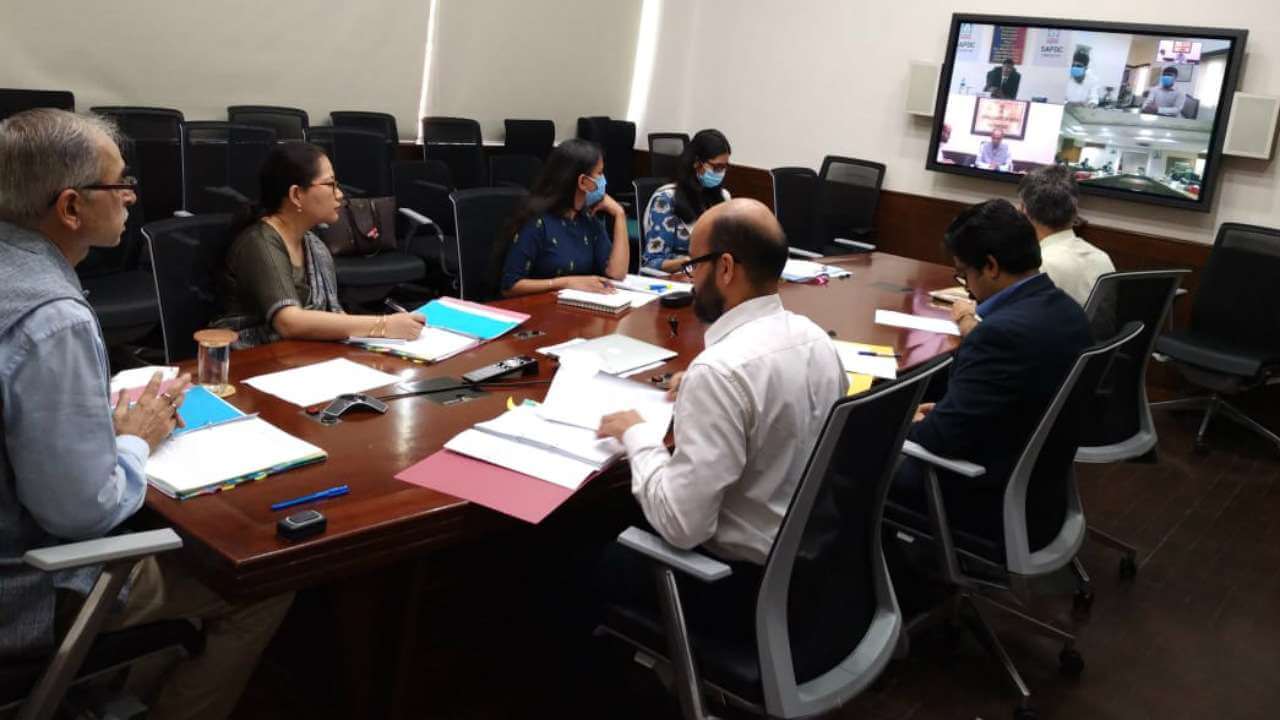On Monday, officials from Nepal and India, in a virtual meeting, held discussions on expediting the completion of India-led projects in Nepal. The meeting was co-chaired by Nepal’s Foreign Secretary, Shankar Das Bairagi, and India’s Ambassador to Nepal, Vinay Mohan Kwatra. The Indian Ministry of External Affairs (MEA) said that the two officials discussed the “progress made” in infrastructure projects over the last year, which included the “reconstruction of 46,301 earthquake-affected houses (out of 50,000 houses committed by India) in Gorkha and Nuwakot districts, the operationalisation of Motihari-Amlekhgunj cross-border petroleum products pipeline, the Integrated Check Post at Biratnagar and High Impact Community Development Projects”. Further, the statement said, “Nepal also noted with appreciation Covid-19 related assistance, including the supply of medicines and medical equipment to Nepal by India.”
Following the meeting, Nepal’s Foreign Ministry released a statement saying: “The meeting also discussed issues related with Pancheshwar multipurpose project, post-earthquake reconstruction, irrigation, power and transmission lines, construction of Nepal Police Academy, integrated check posts, Ramayana circuit, HICDPs, motorable bridges over Mahakali River, agriculture and culture heritage, among others.” The statement further read: “Both sides underlined the need for the expeditious implementation of the bilateral projects. In that connection, they agreed to undertake necessary measures to timely address problems and obstacles in the course of implementation.”
The meeting on Monday was the “8th Meeting of the Oversight Mechanism”, which is a mechanism that was set up by Indian Prime Minister Narendra Modi during his visit to Nepal in 2016 to overlook bilateral infrastructure projects and ensure their expeditious completion. As of today, there exist 10 India-funded road-construction projects in Nepal, stretching over 306 kilometres. Additionally, India is also involved in six railway projects and the construction of several hydropower plants in Nepal.
This is the first meeting since the eruption of tensions between India and Nepal earlier this year. The dispute between the two countries has been going on for some time now and was solidified when the Nepali Parliament put forth a redrawn map that depicted Lipulekh, Kalapani, and Limpiyadhur as Nepali territory. This was allegedly in response to India’s inauguration of a road that connects the Lipulekh Pass and Dharchula. Oli’s recent anti-India stance has also led to destabilisation within his political party, with growing calls for his resignation.
There are differing opinions on what this meeting means for Indo-Nepalese relations. On the one hand, some Indian officials were quoted saying that this meeting was “usual and routine” and not a step towards furthering a diplomatic dialogue between the two countries, as it was a part of a routine mechanism, which requires a “periodic review”. On the other hand, certain commentators, while recognising that significant work still needs to be done, nevertheless view this as a positive step towards reviving friendly relations between the two countries. In fact, Nepal’s Foreign Minister, Pradeep Gyawali, himself acknowledged the importance of diplomatic negotiations to cool the tensions between the two countries. He said, “We can’t hold our entire ties hostage to the differences over the boundary issue.” However, he recognised that while the border tensions were successfully isolated in Monday’s meeting, this is not a permanent solution and the dispute must be resolved.
India, Nepal Discuss Expediting India-Funded Projects in Nepal
This is the first meeting since the eruption of India-Nepal tensions earlier this year.
August 18, 2020

SOURCE: DNA
